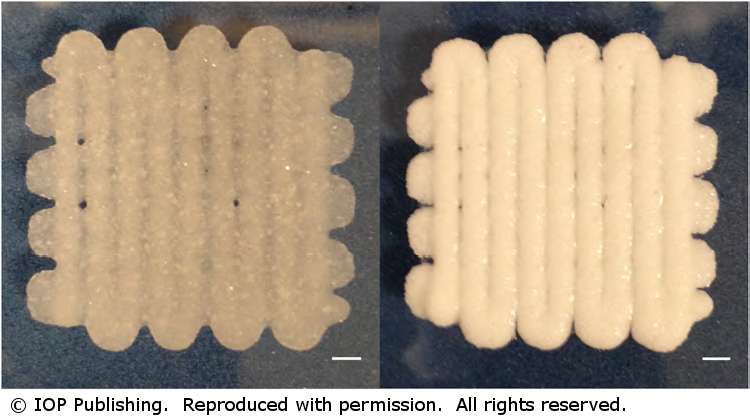The bioprinted 'play dough' capable of cell and protein transfer

Scientists have developed a new technique allowing the bioprinting at ambient temperatures of a strong paste similar to 'play dough' capable of incorporating protein-releasing microspheres.
The scientists demonstrated that the bioprinted material, in the form of a micro-particle paste capable of being injected via a syringe, could sustain stresses and strains similar to cancellous bone - the 'spongy' bone tissue typically found at the end of long bones.
This work, published today (3 July 2015) in the journal Biofabrication, suggests that bioprinting at ambient temperatures is a viable route to the production of materials for bone repair which would allow the inclusion of cells and proteins capable of accelerating the healing of large fractures.
"Bioprinting is a hot research area in tissue engineering," explains Dr Jing Yang, of the University of Nottingham, a lead author on the paper. "However it usually requires a printing environment that isn't compatible with living cells - and those materials that are compatible with living cells usually don't have sufficient mechanical properties for certain applications."
"Initially we're targeting the clinical application of this material as injectable bone defect filler," continues Dr Yang, "but we've postulated that its properties would make it highly suitable for use as a scaffold to reconstruct larger shapes, which could help with more complicated reconstructions - such as nasal reconstruction."
Typically, bioprinting techniques involve high temperature processes, or the application of ultraviolet light or organic solvents, all of which prevent the incorporation of cells and therapeutic biomolecules during the fabrication process.
This technique involved blending poly(L-lactic-co-glycolic acid) and polyethylene glycol with carrier fluids at room temperature to form a micro-particulate extrudable paste that can be formed to desired shapes. These pastes were incubated at 37 °C to form porous solid constructs. The next steps of the process will be to apply this process in a clinical application.
More information: 'Cell and protein compatible 3D bioprinting of mechanically strong constructs for bone repair' Biofabrication 7 035004, 3 July 2015. iopscience.iop.org/1758-5090/7/3/035004
Journal information: Biofabrication
Provided by Institute of Physics















